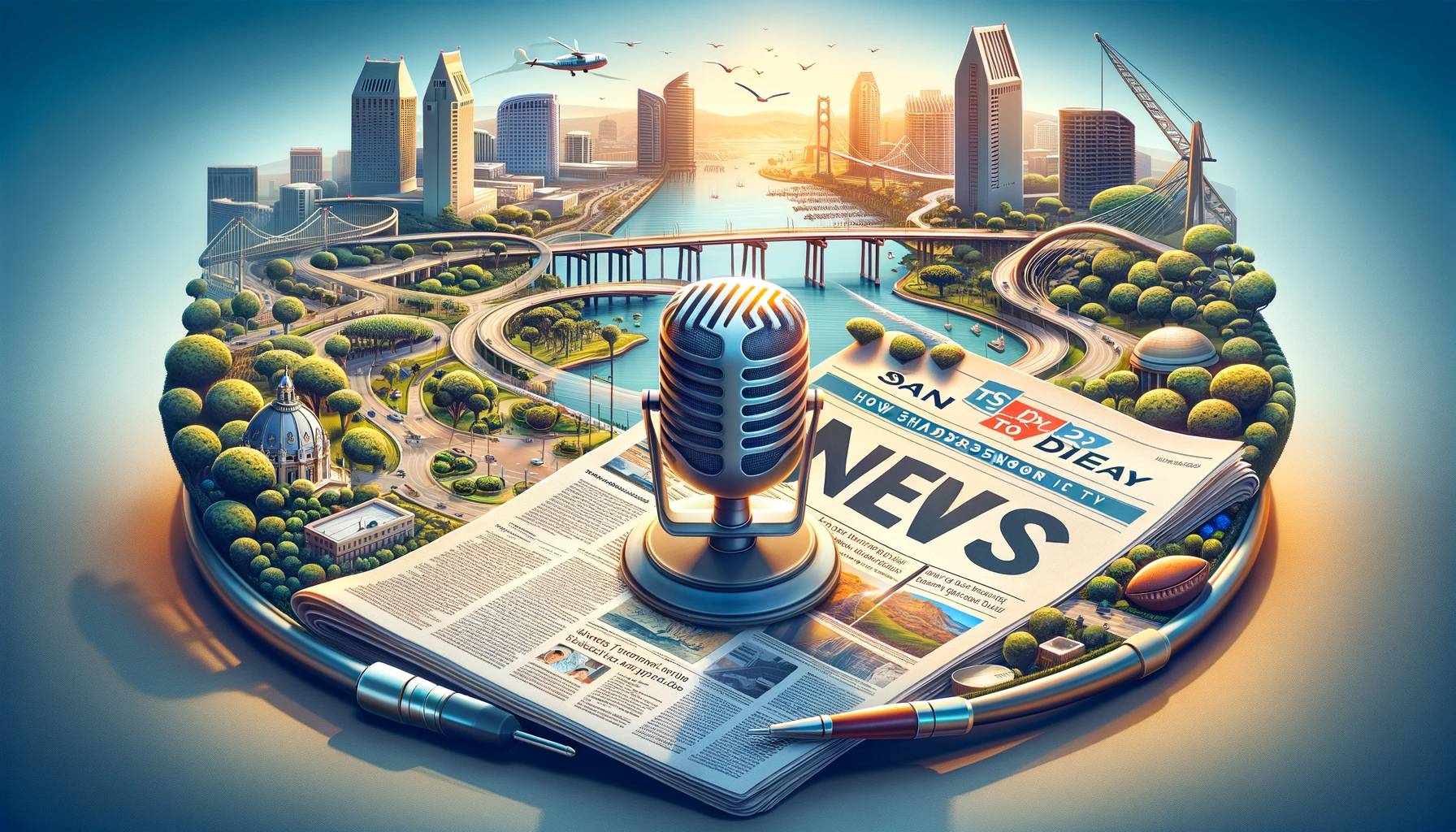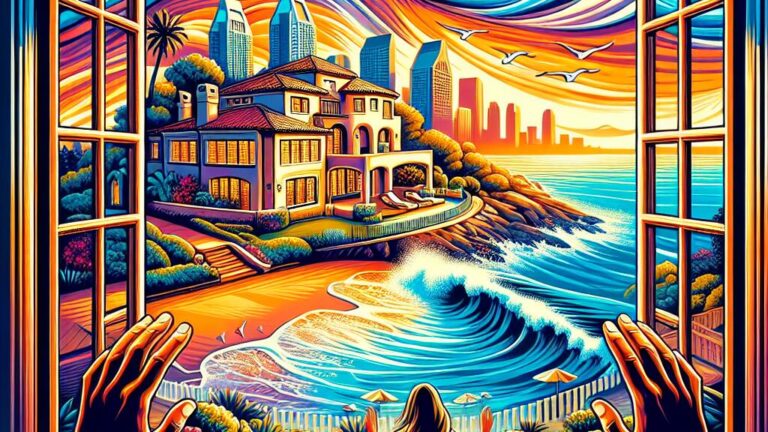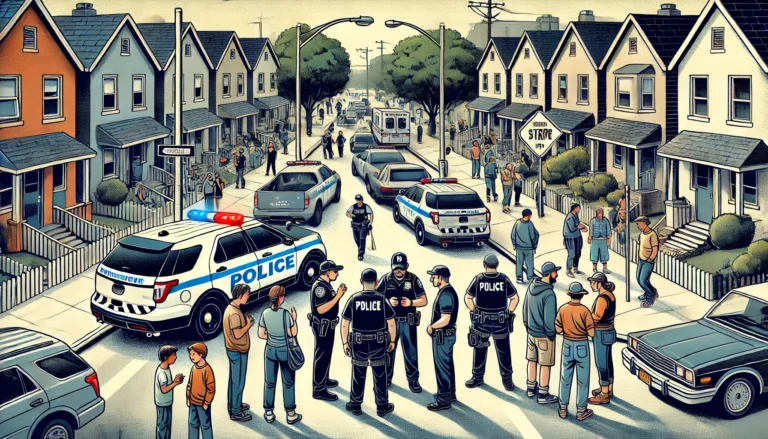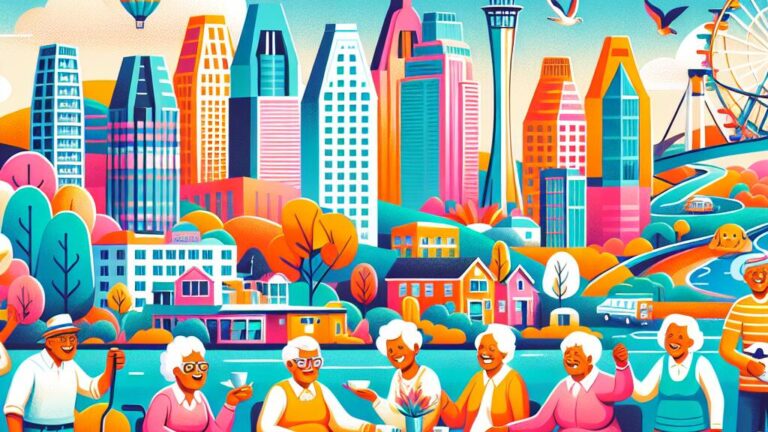San Diego Today News: How It Shapes Our Understanding of the City
Overview of the Impact of Today’s News on Our City Perception
Understanding the daily happenings in San Diego through the lens of news media significantly shapes our perception of the city. The way news is reported, including the angles and aspects that are highlighted, can greatly influence how we see and interpret both current events and broader societal issues. For instance, if crime incidents frequently make headlines, it might lead us to believe that our city is less safe than it actually is. Conversely, more stories about community initiatives or successful local businesses can foster a sense of pride and optimism. News consumption also affects how we perceive certain neighborhoods within San Diego. Media portrayal can either break or reinforce stereotypes about different areas in the city. For example, if reports consistently focus on issues like poverty or violence in a particular neighborhood, that area might be unfairly stigmatized. On the other hand, highlighting positive stories from these communities can encourage a more balanced view and promote understanding among residents from different parts of town. Without resorting to a formal wrap-up phrase, it’s clear to observe how today’s news plays an instrumental role in shaping our comprehension of San Diego. It impacts not only our general perspective but also specific opinions about various neighborhoods and social issues. Therefore, as consumers of news media, we need to be discerning regarding what stories we pay attention to and how we allow them to shape our understanding of this diverse city.
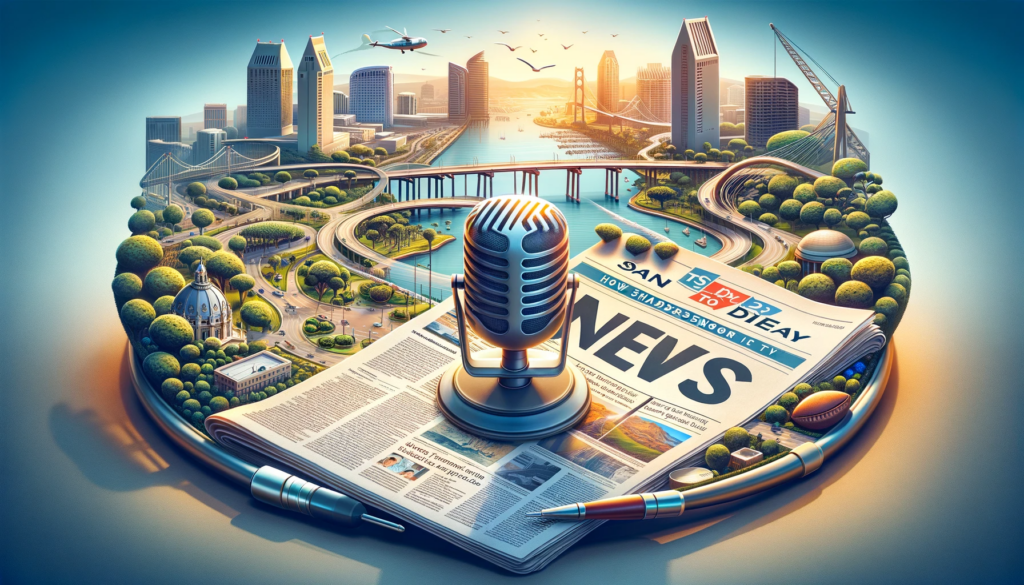
Understanding the City Through Local News: An Analysis
San Diego’s local news serves as a mirror, reflecting the city’s various facets and dimensions. By delving into these news stories, we can glean insights into the city’s political landscape, economic climate, social issues, cultural diversity, and even environmental concerns. For instance, coverage of local elections not only keeps us informed about who our future leaders might be but also exposes us to the key issues that resonate with voters. Similarly, reports on business developments or closures provide a snapshot of the city’s economic health and potential growth areas. Transitioning to social matters, local news stories often spotlight pressing issues such as homelessness, drug addiction or education disparities. Reading about these challenges helps us grasp their scale and complexity within our community. It also highlights efforts being made to address them – whether it’s new policies being implemented by city officials or grassroots initiatives led by dedicated citizens. Moreover, stories about cultural events or profiles of local artists give us a glimpse into San Diego’s rich cultural tapestry. As we delve deeper into understanding San Diego through its local news narratives, it is crucial to maintain an open-minded perspective. Avoid jumping to conclusions based on a single story or issue; instead seek out diverse sources and viewpoints for a well-rounded picture of what life in this city entails. Recognize also that while news often focuses on problems and crises (as they indeed warrant attention), there are countless positive developments occurring every day – testimonies to resilience, innovation and community spirit. Thus without wrapping up formally, it is clear that consuming local news with critical awareness allows us not only to stay informed but also nurtures our sense of connection with this dynamic city we call home.
Revealing the Power of Current Events in Shaping City Perspectives
The power of current events in shaping our understanding and perspective of San Diego cannot be overstated. Current events, especially as reported by local news outlets, serve as an ever-evolving narrative that informs us about the ongoing changes and developments in our city. They guide our conversations, influence our perceptions, and often drive community action. For instance, continuous news coverage on climate change issues can heighten our awareness about environmental sustainability efforts within San Diego. As a result, we might find ourselves participating in local clean-up drives or advocating for green policies. Furthermore, these current events serve to highlight the interconnection between various elements of the city. A single event can simultaneously impact the city’s economic health, social dynamics, political landscape, and cultural expression. Take for example the COVID-19 pandemic; it was not just a public health crisis but also engendered economic repercussions, social changes (like remote work or home-schooling), and even political debates around virus management strategies. Therefore, keeping abreast with such events allows us to comprehend these intersections better and adapt to shifts in our urban fabric. However, while appreciating the role played by current events in crafting our understanding of San Diego, it is important not to overlook their transient nature. What seems significant today may fade into insignificance tomorrow as new occurrences take center stage. Henceforth we should strive not just to keep up with these events but also reflect on their implications over time – how they shape long term trends or how they incite immediate reactions from different sectors of society. This approach will enable us to foster a more nuanced and comprehensive perspective about life in San Diego.
The Role of Daily News in Influencing Public Opinion about the City
The daily news is an undeniable force in shaping public opinion about San Diego. It can highlight the city’s achievements or expose its shortcomings, thereby influencing our collective perception of life here. In this capacity, the news media acts as a sort of mirror reflecting societal realities back to us. When we read stories about thriving local businesses or successful civic initiatives, we feel a sense of pride and optimism for our city. Conversely, when we encounter reports on escalating crime rates or political controversies, it may cultivate feelings of concern or skepticism. Moreover, the news also guides our understanding by deciding which issues get spotlighted and how they are portrayed. For instance, if immigration is persistently reported as a problem in the city, it could potentially foster negative sentiments towards immigrants among some sections of society. On the other hand, if coverage emphasizes the economic contributions made by immigrants and celebrates their cultural diversity, it might instead promote more inclusive attitudes. The framing of news stories thus plays a critical role in shaping public sentiment. Lastly, while daily news is instrumental in molding public opinion about San Diego today, its influence extends beyond immediate reactions to ongoing discussions and future decisions. News coverage can spark dialogues around critical issues that can lead to policy changes or community actions over time. However, it’s essential for us as consumers of news to maintain a discerning eye and understand that every story comes with its own perspective and bias – even when presented as objective reporting. This awareness will help us form more balanced views on various topics concerning our city without being unduly swayed by any single narrative.
How Local Stories Reflect the True Essence of Our City
The news we consume on a daily basis is more than just an update on current events; it offers us a lens through which to perceive our city. Local stories, in particular, serve as a repository of our shared experiences and collective identity. They reflect the unique character of San Diego, capturing its vibrancy, diversity, and resilience in the face of challenges. By reporting on community happenings – be it the opening of a new restaurant in North Park, a charity marathon in Balboa Park, or a breakthrough at one of our renowned research institutes – these stories celebrate the local spirit and bring to light the everyday exceptionalism that makes San Diego special. This is not to say that all local news paints an idyllic picture of our city. There are stories that expose societal issues and areas where improvement is needed. For instance, reports highlighting homelessness or pollution in certain neighborhoods force us to confront uncomfortable realities about our city’s disparities. However, even these tough narratives contribute positively by sparking important conversations and prompting action for change. They compel citizens to engage with their community, thereby fostering greater social responsibility and unity. Moreover, local stories also provide residents with valuable insights into the workings of their city government. They demystify complex policy decisions and help us understand how these decisions impact various aspects across society such as education, infrastructure or public safety. Understanding these dynamics can empower citizens to participate more effectively in civic life by voting intelligently or voicing their opinions on key issues affecting them directly or indirectly. Thus, while local news may seem mundane compared to headline-grabbing national events, they play an indispensable role in nourishing an informed and engaged citizenry committed to bettering their beloved city.
Examining the Influence of Urban Reporting on Citizens’ Impressions
Urban reporting plays a significant role in shaping the impressions and perceptions of citizens about their city. The way news is reported, whether it’s about neighborhood events or citywide policies, can significantly influence how residents view and understand their surroundings. For instance, consistent coverage of crime incidents in a particular locale could potentially create an image of that area as unsafe, even if the overall crime rate is low. Similarly, positive reporting on local business success or community initiatives can boost residents’ pride and sense of belonging to their city. The style of urban reporting also holds sway over public sentiment. Journalists’ portrayal of events and issues through their choice of words, tone, and emphasis can subtly color readers’ interpretations. For example, a story about a local protest can be framed as a disruptive riot or as an inspirational display of civic activism – each perspective generating vastly different reactions from the audience. This power to shape public perception underscores the responsibility journalists bear to report news fairly and accurately. Moreover, urban reporting not only informs citizens about what’s happening around them but also influences their understanding of social dynamics within the community. News stories often shed light on broader societal trends like demographic shifts, economic conditions or cultural changes happening at the grassroots level. These narratives help individuals make sense of complex societal forces at play in their city by providing context and nuance that might otherwise be overlooked in everyday conversations or experiences. Thus, without explicitly concluding, it’s clear that urban reporting has profound effects on how we perceive our cities – shaping our impressions, informing our understanding and ultimately influencing our actions as participating members of society.
Unveiling the City’s Identity through Its Daily News Coverage
San Diego, like any other city, has its own unique identity that is reflected and shaped through its daily news coverage. This identity is not just about geographical location or demographic statistics; it’s a vibrant tapestry woven from the stories of its people, its neighborhoods, its challenges, and triumphs. The news media plays a pivotal role in revealing these stories – the pulse of the city – to its residents and beyond. Daily news reports capture snapshots of life in San Diego, from local politics and business happenings to community events and social issues. Over time, these snapshots form an intricate mosaic that gives insight into the city’s character. Transitioning into another facet of this discussion, it’s important to consider how this unveiling process works. Journalists act as gatekeepers who determine which stories get told and how they are presented. They decide what constitutes ‘news’ in the context of San Diego – what events are newsworthy, which voices deserve to be heard, which issues warrant public attention. This selection process inherently involves a degree of subjectivity and bias since journalists are also products of their environment with their own perspectives and values. Therefore, while we rely on news media for information about our city, we must also remember that it offers a curated view of reality rather than an exhaustive account. Each story reported contributes to our understanding of San Diego’s identity but does not define it entirely. It’s akin to viewing the city through a kaleidoscope: each turn discloses a fresh pattern but never reveals the entirety at once. As discerning consumers of news, we need to approach this kaleidoscopic perspective with curiosity yet maintain awareness of its limitations – remembering that there may always be unseen angles or untold stories lying outside our current frame.
Current Events and Their Role in Reshaping Our Viewpoints about the City
As we delve into the role of current events in reshaping our viewpoints about San Diego, it’s vital to note that these incidents are not isolated occurrences. They form part of a larger narrative that shapes and is shaped by the city’s identity. Each headline, each news report provides us with different lenses through which we can view our surroundings. A political rally, a new business venture, or even a local festival – all these events not only inform us about what’s happening in the city but also subtly influence our understanding of it. In addition to providing information, current events often stimulate discussion and debate among residents. They spark conversations on social media platforms, in coffee shops, and around dinner tables. These discussions are integral to forming public opinion and can significantly impact how people perceive their city. For instance, reports on issues like homelessness or climate change could initiate dialogues about social responsibility and sustainability, thereby influencing how San Diegans perceive their role within their community. However, despite its significance, we must tread carefully while interpreting news about current events. News is not merely an objective presentation of facts; it’s an interpretation of reality affected by various factors like journalistic bias or editorial policies. Thus, while current events undeniably contribute towards shaping our understanding of San Diego’s identity, they offer just one piece of a larger puzzle – one perspective in a city teeming with diverse views and experiences. Therefore, it’s essential for us as consumers to approach news critically; comparing different sources, questioning assumptions presented as facts and being open to perspectives that challenge our own beliefs about the city we call home.
The Connection between Today’s Headlines and Our Knowledge About the Urban Environment
The headlines we encounter daily, whether on our morning newspaper or our social media feeds, significantly impact our knowledge and understanding of the urban environment. By presenting us with various happenings around the city – from infrastructural developments to environmental initiatives – news outlets provide us snapshots of San Diego’s dynamic landscape. For instance, a headline about a new park opening may not only inform us about a new recreational spot but also subtly shape our perception of the city as one that values green spaces. In addition to informing us, these headlines often incite curiosity and prompt further exploration. When we read about a newly inaugurated public art installation downtown or an upcoming cultural festival in Balboa Park, it might pique our interest and motivate us to learn more about these aspects of our city. As such, even though they are just brief snippets of information, headlines can serve as catalysts for deeper engagement with our urban surroundings. However, while acknowledging their role in shaping our knowledge about San Diego’s urban environment, it is essential to remember that headlines merely skim the surface. They offer an overview but cannot capture the full complexity and diversity of any city’s urban fabric. Therefore, despite their utility in keeping us informed and engaged with what’s happening around town, they should be seen as starting points rather than comprehensive sources of information. It remains upon us as residents to delve beyond these headlines – to explore different neighborhoods on foot or engage with community members – to truly understand and appreciate the multifarious nature of San Diego’s urban environment.
Decoding Our Metropolis: The Indirect Education We Get from Today’s News
The headlines we read and the news stories we consume have a profound yet subtle educational effect on us. As we sift through the latest happenings in San Diego, our understanding of the city’s dynamics, its people, and its culture is unconsciously shaped. This indirect education extends beyond simple awareness of events or developments in our city. It informs us about societal issues, political debates, cultural trends, and environmental concerns that are unique to San Diego. For instance, a news report about an affordable housing initiative provides insight into the city’s socio-economic challenges, while a feature story on local cuisine can illuminate aspects of the region’s cultural heritage. Furthermore, keeping abreast with current events allows us to participate more effectively in community dialogues and civic engagements. When we read about public hearings regarding new development projects or contentious policy changes, it equips us to engage in these conversations with informed perspectives. This knowledge indirectly empowers us as citizens to contribute meaningfully to our communities – whether by voicing our opinions at town hall meetings or casting an informed vote during municipal elections. Without explicitly stating it, news outlets provide residents with valuable insights into the intricate workings of their metropolis. They highlight not only what is happening but also why it matters – thereby fostering a richer understanding of our urban surroundings. So while headlines may not offer a comprehensive view of San Diego’s urban fabric, they undoubtedly play a crucial role in educating us about our city’s character and complexities – shaping how we perceive and interact with it every day.

